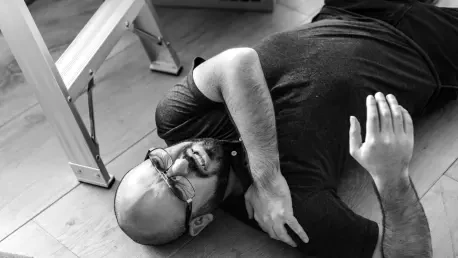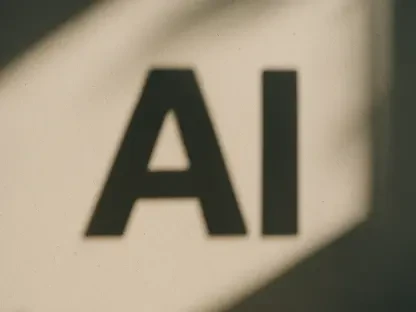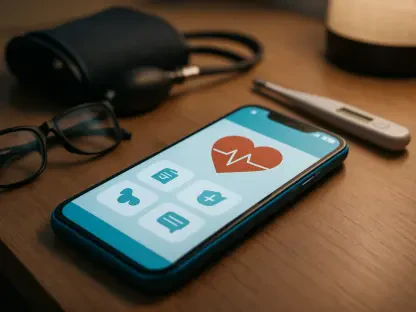The smart fall detection market is emerging as a transformative force in healthcare technology, addressing a critical need for safety among vulnerable populations worldwide, especially as falls remain a leading cause of injury among the elderly. With severe consequences like fractures or head trauma often resulting from such incidents, the demand for innovative solutions has never been more urgent. This market, centered on devices that detect falls in real-time and automatically alert caregivers or emergency services, is witnessing explosive growth. Valued at $1.25 billion in 2024, it is projected to climb to $1.41 billion in 2025 and reach an impressive $4.18 billion by 2034, reflecting a compound annual growth rate (CAGR) of 12.83%. These devices, whether wearable like smartwatches or non-wearable like in-home sensors, leverage advanced technologies such as artificial intelligence (AI), machine learning (ML), accelerometers, and connectivity options including Bluetooth and cellular networks. Their primary goal is to enhance safety for the elderly, individuals with mobility challenges, and those recovering from medical procedures. By providing rapid emergency responses, these systems empower users to maintain independence while offering peace of mind to families and caregivers. This article explores the remarkable growth trajectory of this sector, delving into the driving forces behind its expansion, key market segments, regional dynamics, and emerging trends that are shaping the future of fall prevention and response.
Unveiling Market Growth and Future Projections
The smart fall detection market is on a remarkable upward trajectory, showcasing its vital role in modern healthcare. Starting from a valuation of $1.25 billion in 2024, the market is expected to grow to $1.41 billion in 2025 and ultimately reach $4.18 billion by 2034. This expansion, driven by a consistent CAGR of 12.83% from 2025 to 2034, underscores a growing reliance on technology to address fall-related risks. In the U.S., a significant contributor to global figures, the market was valued at $153.13 million in 2024 and is projected to surge to $526.78 million by 2034, with a slightly higher CAGR of 13.15%. Such robust growth reflects not only technological advancements but also a heightened awareness of the dangers falls pose, especially to aging populations. Healthcare systems globally are increasingly prioritizing preventive solutions and remote monitoring, ensuring that this market’s momentum remains strong as it adapts to evolving societal needs.
Beyond the raw numbers, this growth signifies a broader shift toward integrating technology into everyday safety measures. The steady rise in adoption rates can be attributed to continuous improvements in sensor accuracy and communication capabilities, making these devices more reliable than ever. Additionally, the push for cost-effective healthcare solutions has amplified interest in tools that reduce hospital stays and emergency visits through timely interventions. As more individuals and institutions recognize the value of fall detection systems, the market is poised to become a cornerstone of preventive care, reshaping how safety is approached for vulnerable groups across diverse settings.
Forces Driving Market Expansion
A pivotal factor propelling the smart fall detection market forward is the aging global population, particularly in regions such as North America and Asia Pacific. With a growing number of individuals over the age of 60, the incidence of falls—and the associated risks of serious injury—has escalated, creating an urgent need for real-time monitoring solutions. Elderly care, especially for those who live independently, stands out as a dominant end-user segment, highlighting the importance of technologies that support autonomy while ensuring safety. This demographic trend is not merely a statistic but a call to action for healthcare providers and technology developers to address a pressing societal challenge with innovative tools that can save lives.
Technological advancements serve as another powerful engine of growth for this sector. The integration of AI, ML, and the Internet of Things (IoT) into fall detection devices has significantly enhanced their ability to accurately identify falls and even predict potential incidents before they occur. These innovations minimize false alarms, a common issue in earlier systems, thereby increasing trust among users and caregivers. Furthermore, the use of multimodal sensors, which combine accelerometers, gyroscopes, and other data collection tools, ensures precision in detecting even subtle changes in movement. This technological leap forward is transforming fall detection from a reactive measure into a proactive safeguard, offering a new layer of protection for at-risk individuals.
The rise of remote patient monitoring and telehealth is also reshaping the landscape, adding momentum to market demand. Smart fall detection devices are increasingly being linked with telehealth platforms, enabling healthcare professionals to monitor patients without the need for physical visits. This integration proves especially beneficial for post-operative recovery and elderly care, reducing healthcare costs and minimizing the burden of hospital stays while ensuring prompt responses to emergencies. Government initiatives, particularly in North America, further bolster this growth through funding and policies that promote elderly care and the adoption of cutting-edge healthcare technologies, creating a supportive environment for market expansion.
Breaking Down Market Segments and Leaders
When examining the smart fall detection market by product type, wearable devices such as smartwatches emerged as the frontrunners in 2024, largely due to their ease of use and seamless integration into daily routines. These wearables, capable of instantly alerting emergency contacts upon detecting a fall, appeal to a wide range of users across different age groups. Their design prioritizes convenience, allowing individuals to wear them comfortably while maintaining access to critical safety features. As a result, wearables have become synonymous with personal safety, driving significant market share and setting a benchmark for user-friendly fall detection solutions that align with modern lifestyles.
In contrast, non-wearable devices, such as in-home sensors, are projected to experience the fastest growth over the forecast period. These systems offer passive monitoring, making them ideal for individuals requiring consistent oversight in home environments, particularly those in at-home care settings. Unlike wearables, they do not require active user engagement, which can be a crucial advantage for patients with limited mobility or cognitive challenges. Their ability to blend into living spaces while providing comprehensive fall detection ensures they cater to a growing segment of the population, signaling a diversification of solutions tailored to varied needs within the market.
Delving into technology segments, sensor-based systems, especially those utilizing multi-sensor combinations, held a dominant position in 2024. Their compact design, energy efficiency, and precision in capturing movement data have made them indispensable. Enhanced by AI, these sensors can differentiate between normal activities and actual falls, reducing unnecessary alerts. Meanwhile, communication technologies like cellular networks are anticipated to grow rapidly, driven by the need for instant emergency notifications and real-time data transmission. This balance of detection accuracy and connectivity highlights how technological synergy is elevating the reliability and reach of fall detection systems.
Regional Insights and Growth Hotspots
North America secured the largest market share—approximately 35%—in 2024, a reflection of its aging population, high disposable income, and strong governmental support for elderly care initiatives. The region’s commitment to technological innovation, coupled with collaborations among companies to develop advanced fall detection devices, reinforces its leadership. A significant number of older adults living independently or requiring real-time monitoring due to chronic conditions further drives adoption rates. This confluence of demographic and economic factors, alongside a robust healthcare infrastructure, positions North America as a benchmark for how policy and innovation can intersect to address fall-related challenges effectively.
Asia Pacific, on the other hand, is set to witness the fastest CAGR during the forecast period, fueled by a rapidly aging population in countries like Japan, South Korea, and China. Government efforts to advance digitalization in healthcare, combined with the presence of leading technology firms innovating with AI- and IoT-equipped devices, are accelerating market growth. The urgent need for smart healthcare solutions to prevent fall-related injuries among the elderly is a key motivator in this region. As cultural and economic dynamics push for accessible safety tools, Asia Pacific emerges as a critical growth hotspot, illustrating how regional priorities shape the global trajectory of fall detection technologies.
These regional disparities reveal the intricate interplay of demographic trends, policy frameworks, and technological capabilities in shaping market dynamics. While North America benefits from established systems and resources, Asia Pacific’s expansion is driven by necessity and a forward-thinking approach to healthcare digitalization. This diversity underscores the global nature of the challenge posed by falls, as well as the tailored strategies required to address it, ensuring that solutions are both context-specific and universally impactful.
Emerging Trends and Future Opportunities
One of the most prominent trends shaping the smart fall detection market is the adoption of multimodal sensor technology, which integrates various sensors like accelerometers, gyroscopes, and pulse meters to enhance detection accuracy. Supported by edge computing for localized data processing, this approach ensures faster responses while prioritizing user privacy, especially in vision-based systems. The focus on precision is not just a technical improvement but a fundamental shift toward building trust in these devices, as accuracy directly impacts their effectiveness in real-world scenarios. This trend points to a future where fall detection becomes increasingly reliable, addressing a core concern for both users and caregivers.
Another significant development is the emphasis on user experience and preventive care. Manufacturers are designing compact, comfortable, and aesthetically pleasing devices, such as smartwatches, to minimize resistance to continuous monitoring. Beyond aesthetics, there is a growing focus on predictive capabilities powered by AI, enabling devices to assess fall risks before incidents occur. This preventive approach, whether through wearable gadgets or floor sensors, not only enhances safety but also boosts operational efficiency for caregivers by reducing emergency responses to actual events rather than false positives. Such innovations signal a market evolving to prioritize both functionality and user acceptance.
The integration of fall detection systems with telehealth and remote monitoring platforms represents a transformative trend. This convergence facilitates seamless data sharing between patients and healthcare providers, enabling early detection of risks and reducing the need for in-person consultations. Particularly valuable in post-operative and elderly care settings, these integrated systems help prevent complications and improve recovery outcomes. As telehealth continues to gain traction, fall detection devices are becoming integral to a broader ecosystem of connected healthcare, offering a glimpse into a future where technology bridges gaps in access and care delivery with unprecedented efficiency.
Navigating Challenges and Seizing Potential
Despite its promising outlook, the smart fall detection market faces notable challenges that could temper its growth. A significant concern is the risk of unauthorized access to sensitive patient data, which could result in privacy breaches or false emergency alerts triggered with harmful intent. System malfunctions or missed detections also pose serious risks, potentially undermining confidence in these technologies. Additionally, the high subscription costs associated with many fall detection services can limit accessibility, particularly for individuals with constrained financial resources. These hurdles highlight the need for robust security measures and cost-effective models to ensure equitable adoption across diverse populations.
On the flip side, substantial opportunities exist to drive future growth, particularly through personalized risk assessment. AI algorithms capable of analyzing extensive datasets can offer deep insights into individual fall risks, enabling tailored interventions that address specific vulnerabilities. This personalized approach not only enhances safety but also reduces false alarms by recognizing unique patterns in health histories, thereby easing the burden on caregivers. Such advancements point to a market that is not just expanding in size but also in sophistication, focusing on customized solutions that resonate with individual user needs and improve overall outcomes.
Further potential lies in the evolution of communication technologies, such as cellular networks, which ensure instant alerts and real-time data transmission. As connectivity improves, fall detection devices can become more dependable and accessible, broadening their reach. Collaborations between technology firms and healthcare providers also open doors for innovative solutions, fostering an environment of continuous improvement. By addressing challenges like data security and affordability while capitalizing on personalized care and connectivity, the market is well-positioned to overcome barriers and sustain its upward trajectory, shaping the future of safety in healthcare.
Reflecting on a Transformative Journey
Looking back, the smart fall detection market has carved a significant path, starting from a valuation of $1.25 billion in 2024 and setting sights on $4.18 billion by 2034 with a steadfast CAGR of 12.83%. This journey has been fueled by an aging population, breakthroughs in AI and sensor technologies, and the growing embrace of remote monitoring. North America led with a 35% market share, while Asia Pacific emerged as the fastest-growing region, driven by demographic imperatives and digital healthcare strides. Trends like multimodal sensors and telehealth integration have defined the industry’s focus on precision and accessibility, even as challenges such as data privacy and cost barriers demand attention. For the future, stakeholders should prioritize robust security protocols and affordable pricing models to broaden access. Investing in AI-driven personalization and stronger connectivity will further enhance device effectiveness, ensuring that fall detection systems remain vital tools in safeguarding vulnerable populations and redefining healthcare safety standards.









